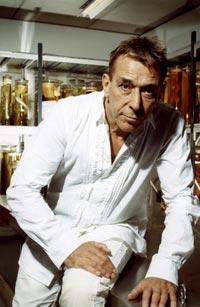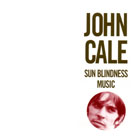

Album reviews

Sun Blindness Music
Review by Ken Clark
"Sun Blindness Music" was originally intended to be a 3 CD set documenting Cale's early experimental work but likely due to marketing restrictions are now being released separately. Not a bad decision, a 3 CD set would likely test the endurance of even the most avant-garde of Cale's fans. There are three relatively long pieces on this disk. It is not certain if once they were recorded, they were ever listened to again. Part of Tony Conrad's famous tape archive, they are a welcome addition to the Cale discography as this music has often been talked about but rarely heard.
"Day of Niagara" came out last year, which featured Cale, Conrad, Lamonte Young, Angus McLiese, and others. This music had been only previously available on very limited edition records that were distributed to their nearest and dearest. During the various revivals of the Velvet Underground in the 80's and 90's, Cale was often quizzed by knowledgeable interviewers about this material as much of it was grafted into the first two Velvets albums and found to be missing from the sound when Cale left the group. Cale has returned to many of the ideas on these early recording throughout his solo work, now we finally have a chance to hear it for ourselves.
"Sun Blindness Music " evidences the Lamonte Young "drone" theory of music with notes sustained for long periods of time to explore the sonic variations that they generate. Guaranteed to make the neighbours have some serious questions about your sanity.
Attempts to describe this music are pretty futile but here goes:
"Sun Blindness Music" (1967): 42:42 minutes of swirling organ drone not dissimilar to "Sister Ray" in fact it was recorded around the same time. You can also hear echoes of some of the work that would later evolve into "Church of Anthrax". It sounds like some mad horror film soundtrack in Dr. Frankenstein's laboratory. Cale is obviously feeling his way through the power of the sustain keys on the Continental Vox organ as he saws them back and forth and then goes on to explore some of the melodies. This piece really starts to grow on you after repeated listenings if you can survive that far.
"Summer Heat" (1965) (11:06) consists of power chords played on a very distorted electric guitar. This clearly generates strange acoustics and reverberations that Cale is obviously experimenting and improvising on.
"The Second Fortress" (late 1967/early 1968) (10:36) is another organ improvisation piece very different from the first track. It is more like a radio caught between two stations but certainly not without interest. It sounds a bit like the early Robert Fripp/Brian Eno experiments on "No Pussyfooting".
This CD is certainly not for those who prefer the "pop" aspect of Cale's catalogue but for those who enjoy sonic exploration of the first order this is certainly the ticket.